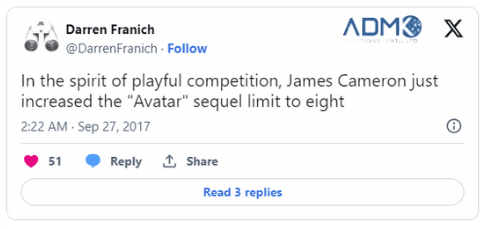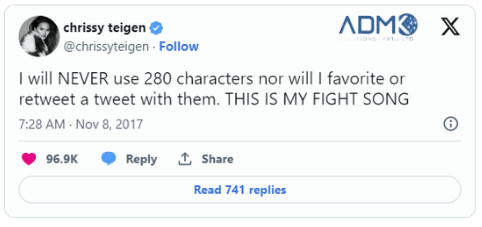Twitter, a platform renowned for its brevity and real-time updates, has undergone significant changes in recent years, especially concerning twitter limit characterss. This guide aims to provide you with an in-depth understanding of the twitter limit characters and nuances available to Twitter users in 2024.
Understanding the Basics
Traditionally, Twitter was synonymous with the iconic 140-twitter limit characters. This constraint forced users to be concise and creative in their messaging. However, in recent years, Twitter has introduced several modifications to accommodate different blog formats and user preferences.
twitter limit characterss in 2024: A Breakdown
- Standard Tweets: While the core functionality of Twitter remains centered around short, snappy messages, the twitter limit characters for standard tweets has been adjusted. Currently, users can enjoy a more generous character count, allowing for slightly longer and more detailed thoughts to be expressed.
- Retweets: Retweeting content remains a fundamental aspect of Twitter. twitter limit characterss for retweets typically follow the same rules as standard tweets, with additional characters allocated for comments or quoted text.
- Direct Messages (DMs): Twitter’s direct messaging feature has seen expansions in twitter limit characterss. Users can now engage in more extended conversations without the constraints of the original 140-twitter limit characters. This change has fostered deeper interactions between users.
- Media Attachments: Images, videos, and other media content can significantly impact the character count of a tweet. Twitter often provides specific guidelines on how media attachments affect the available characters for text. Be mindful of these limitations when incorporating visual elements into your tweets.
- Quoted Tweets: When quoting another tweet, Twitter typically allocates a certain number of characters for the quoted text itself, in addition to the characters available for your comment. This allows for more context and engagement in conversations.
Tips for Maximizing Characters
- Prioritize Key Information: Given the twitter limit characters, it’s essential to prioritize the most crucial information at the beginning of your tweet.
- Use Relevant Hashtags: Hashtags can help increase visibility, but use them judiciously to avoid eating into your character count.
- Leverage Media Effectively: Visual content can enhance your tweet’s impact without consuming many characters.
- Proofread Carefully: Even a few extra characters can make a significant difference. Proofread your tweets to ensure clarity and accuracy.
- Experiment with Different Formats: Explore various tweet formats, such as polls, threads, and quoted tweets, to find what works best for your content.
By understanding the twitter limit characters and utilizing effective strategies, you can create engaging and impactful tweets that resonate with your audience. Stay updated on any further changes to Twitter’s character rules to maintain your competitive edge on the platform.
Tweeting Made Easier in 2024
Twitter, now X, has undergone significant transformations in recent years, making it a dynamic platform for communication and engagement. With new features and algorithm updates, crafting and sharing tweets has become more intuitive and effective.
One of the most notable changes is the increased twitter limit characters. Gone are the days of cramming thoughts into 280 characters. Twitter now allows for longer tweets, providing more space to express yourself fully. This expanded character count has opened up new possibilities for storytelling, sharing detailed information, and engaging in deeper conversations.
Beyond the twitter limit characters, Twitter has introduced features to enhance the visual appeal of your tweets. High-quality image and video support have become essential for capturing attention in a crowded feed. Additionally, the platform’s emphasis on visual storytelling has made it easier to create engaging content that resonates with your audience.
To help users navigate the platform more efficiently, Twitter has refined its algorithm. While the exact workings of the algorithm remain somewhat mysterious, it’s clear that engagement plays a crucial role. By interacting with other users, liking, retweeting, and replying to tweets, you can increase your visibility and reach a wider audience.
Another way to boost your tweet’s visibility is through the strategic use of hashtags. Hashtags help categorize your content and make it discoverable by users interested in specific topics. By following relevant trends and using popular hashtags, you can increase your chances of reaching a larger audience.
Twitter’s focus on community building has also made it easier to connect with like-minded individuals. Features like Spaces and Fleets (now gone) have facilitated real-time interactions and discussions. By participating in conversations and building relationships with other users, you can create a loyal following and foster a sense of community around your content.
In conclusion, Twitter has evolved into a platform that empowers users to express themselves creatively, connect with others authentically, and share information effectively. By understanding the platform’s features and algorithms, you can optimize your tweeting strategy and make the most of this dynamic social media landscape.
Why 280 Characters? The Twitter twitter limit characters Dilemma
Twitter, the platform synonymous with brevity, has long been defined by its 140-twitter limit characters. A constraint that forced users to distill their thoughts into concise, impactful messages. But in 2017, Twitter doubled the limit to 280 characters. Why the change? And is there room for further expansion?
The original 140-twitter limit characters was born from the constraints of SMS messaging. As Twitter grew, so did the desire to express more complex ideas. Data revealed that a significant portion of tweets were hitting the character cap, leading to frustration and the need for thread-based storytelling. Increasing the limit aimed to alleviate this issue, allowing for more nuanced expression.
However, the question remains: is 280 characters enough? Some argue that it still limits creativity and forces oversimplification. Others believe it strikes a balance between brevity and depth. The truth likely lies somewhere in between.
A potential increase in twitter limit characters could lead to more comprehensive thoughts and discussions. It might encourage longer-form content, blurring the lines between microblogging and traditional blogging. Yet, it’s essential to consider the potential downsides. Excessive length could reduce Twitter’s fast-paced nature, making it less appealing to those who prefer quick, bite-sized information.
Twitter’s future direction is uncertain. While there’s no official word on further twitter limit characters increases, the platform has experimented with features like Fleets (now gone) and longer-form tweets for subscribers. These initiatives suggest a willingness to explore new formats.
Ultimately, the optimal twitter limit characters is a complex issue with no easy answer. It depends on evolving user behavior, platform goals, and the delicate balance between brevity and expressiveness. As Twitter continues to evolve, we can expect ongoing discussions and potential changes to the twitter limit characters.
Will Feeds Be Filled with Huge Tweets?
The increase in twitter limit characterss for tweets has undeniably expanded the creative and expressive potential of the platform. However, the question of whether this will lead to a deluge of lengthy, unwieldy tweets is a complex one.
Factors Influencing Tweet Length
Several factors will influence the average tweet length:
- User Behavior: While the option for longer tweets exists, it doesn’t guarantee its widespread adoption. Users may continue to favor concise and impactful messages, especially considering the fast-paced nature of the platform.
- Platform Algorithm: Twitter’s algorithm will play a crucial role. If shorter, engaging tweets continue to perform better, users might be incentivized to stick to a more succinct format.
- Content Type: Different types of content will lend themselves to varying lengths. News updates, for instance, might benefit from additional characters, while quick thoughts or reactions might remain concise.
- Visual Content: The increasing use of images, videos, and other media can complement text, reducing the need for extensive explanations.
Potential Impacts on the Feed
While there’s a possibility of encountering longer tweets, several factors could mitigate the impact on the overall feed:
- User Control: Users have tools to manage their feed, including muting, unfollowing, and list management. This allows for customization and filtering of content.
- Platform Features: Twitter might introduce features to address potential issues. For example, they could implement options to collapse long tweets or prioritize shorter, more engaging content in the feed.
- Evolution of User Habits: As users adapt to the new twitter limit characters, a balance might emerge, with a mix of short and long-form content.
While the increased twitter limit characters offers new possibilities, it’s unlikely to completely transform the nature of Twitter into a platform dominated by lengthy posts. User behavior, platform algorithms, and content diversity will likely shape the evolution of the tweet landscape. It’s more probable that we’ll see a gradual shift, with longer tweets becoming more common in specific niches or for particular types of content, rather than a wholesale overhaul of the platform.
Ultimately, the success of longer tweets will depend on their ability to engage and retain audience attention. If users find value in longer, more detailed content, then we might see a gradual increase in their prevalence. However, if brevity continues to reign supreme, shorter tweets will likely remain the dominant force on the platform.
It’s essential to monitor platform developments and user trends to fully understand the impact of the increased twitter limit characters on Twitter’s ecosystem.
User Reviews on Twitter’s twitter limit characters Increase
Twitter’s decision to double the twitter limit characters from 140 to 280 in 2017 was a significant change that sparked a wide range of reactions from users. While some embraced the extra space to express themselves more fully, others found the change to be unnecessary or even detrimental to the platform’s core identity.
Positive Reactions
Many users welcomed the increased twitter limit characters, arguing that it allowed for more nuanced and thoughtful expression. They appreciated the ability to share longer stories, provide additional context, and engage in more complex conversations. Some found it particularly helpful for sharing links while still adding meaningful commentary. Additionally, the change was seen as a step towards making Twitter more accessible to non-English speakers, as many languages require more characters to convey the same meaning as English.
Negative Reactions
Despite the positive feedback, a considerable number of users expressed dissatisfaction with the change. Some argued that the 140-twitter limit characters was a core part of Twitter’s appeal, forcing users to be concise and creative in their messaging. They felt that the longer format encouraged less engaging and more verbose tweets. Others worried that the change would lead to an increase in spam and promotional content.
Mixed Feelings
A significant portion of the user base seemed to have mixed feelings about the change. While they recognized the benefits of the extra space, they also missed the brevity and immediacy of the original format. Many users reported adapting their tweeting habits to accommodate the new limit, with some choosing to use the full 280 characters while others continued to stick closer to the previous limit.
Overall Impact
While the increase in twitter limit characters did not fundamentally alter the nature of Twitter, it did have a noticeable impact on how users interacted with the platform. The change provided more flexibility for those who desired it, while also creating a sense of loss for those who preferred the platform’s original constraints. Ultimately, the success of the change can be measured in terms of user engagement and satisfaction, which appears to have increased overall, though opinions remain divided.







